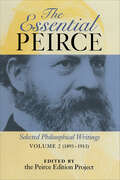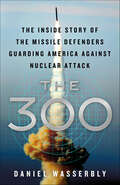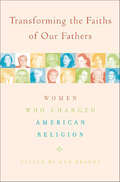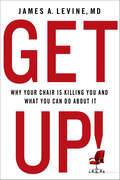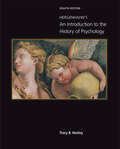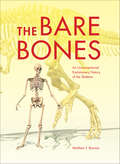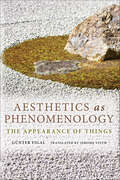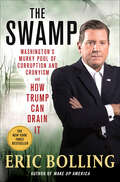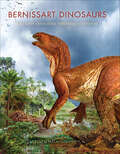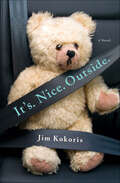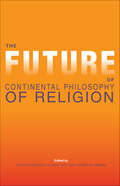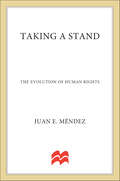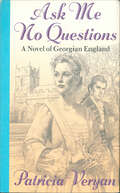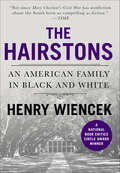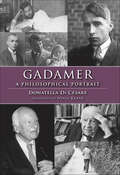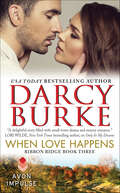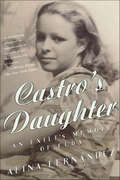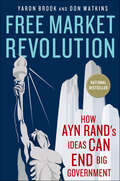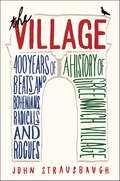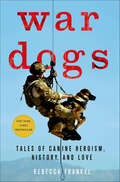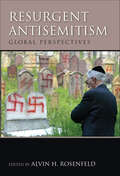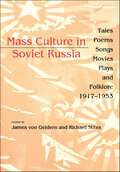- Table View
- List View
The Essential Peirce, Volume 2: Selected Philosophical Writings (The Essential Peirce)
by Peirce Edition ProjectPraise for Volume 1:" . . . a first-rate edition, which supersedes all other portable Peirces. . . . all the Peirce most people will ever need." —Louis Menand, The New York Review of BooksVolume 2 of this convenient two-volume chronological reader's edition provides the first comprehensive anthology of the brilliant American thinker Charles Sanders Peirce's mature philosophy. A central focus of Volume 2 is Peirce's evolving theory of signs and its appplication to his pragmatism.
The Zero Marginal Cost Society: The Internet of Things, the Collaborative Commons, and the Eclipse of Capitalism
by Jeremy RifkinIn The Zero Marginal Cost Society,New York Times bestselling author Jeremy Rifkin describes how the emerging Internet of Things is speeding us to an era of nearly free goods and services, precipitating the meteoric rise of a global Collaborative Commons and the eclipse of capitalism.Rifkin uncovers a paradox at the heart of capitalism that has propelled it to greatness but is now taking it to its death—the inherent entrepreneurial dynamism of competitive markets that drives productivity up and marginal costs down, enabling businesses to reduce the price of their goods and services in order to win over consumers and market share. (Marginal cost is the cost of producing additional units of a good or service, if fixed costs are not counted.) While economists have always welcomed a reduction in marginal cost, they never anticipated the possibility of a technological revolution that might bring marginal costs to near zero, making goods and services priceless, nearly free, and abundant, and no longer subject to market forces.Now, a formidable new technology infrastructure—the Internet of things (IoT)—is emerging with the potential of pushing large segments of economic life to near zero marginal cost in the years ahead. Rifkin describes how the Communication Internet is converging with a nascent Energy Internet and Logistics Internet to create a new technology platform that connects everything and everyone. Billions of sensors are being attached to natural resources, production lines, the electricity grid, logistics networks, recycling flows, and implanted in homes, offices, stores, vehicles, and even human beings, feeding Big Data into an IoT global neural network. Prosumers can connect to the network and use Big Data, analytics, and algorithms to accelerate efficiency, dramatically increase productivity, and lower the marginal cost of producing and sharing a wide range of products and services to near zero, just like they now do with information goods. The plummeting of marginal costs is spawning a hybrid economy—part capitalist market and part Collaborative Commons—with far reaching implications for society, according to Rifkin. Hundreds of millions of people are already transferring parts of their economic lives to the global Collaborative Commons. Prosumers are plugging into the fledgling IoT and making and sharing their own information, entertainment, green energy, and 3D-printed products at near zero marginal cost. They are also sharing cars, homes, clothes and other items via social media sites, rentals, redistribution clubs, and cooperatives at low or near zero marginal cost. Students are enrolling in free massive open online courses (MOOCs) that operate at near zero marginal cost. Social entrepreneurs are even bypassing the banking establishment and using crowdfunding to finance startup businesses as well as creating alternative currencies in the fledgling sharing economy. In this new world, social capital is as important as financial capital, access trumps ownership, sustainability supersedes consumerism, cooperation ousts competition, and "exchange value" in the capitalist marketplace is increasingly replaced by "sharable value" on the Collaborative Commons. Rifkin concludes that capitalism will remain with us, albeit in an increasingly streamlined role, primarily as an aggregator of network services and solutions, allowing it to flourish as a powerful niche player in the coming era. We are, however, says Rifkin, entering a world beyond markets where we are learning how to live together in an increasingly interdependent global Collaborative Commons.
The 300: The Inside Story of the Missile Defenders Guarding America Against Nuclear Attack
by Daniel WasserblyMilitary and security expert Daniel Wasserbly introduces the elite unit tasked with protecting the nation from long-range weapons of mass destruction.Comprised of just three hundred soldiers, the United States Army’s 100th Missile Defense Brigade and 49th Missile Defense Battalion utilize sophisticated and cutting-edge technology to monitor the skies and seas surrounding the country and shield three hundred million Americans against any potential nuclear threat. Named for the number of Spartan warriors who defended Greece at the Battle of Thermopylae, these vigilant individuals endure rigorous, always-evolving regimens to maintain peak efficiency in the event of an actual nuclear strike.Assigned to extraordinary locations at Fort Greely, Alaska and Schriever Air Force Base, Colorado, the 300 are responsible for the highest levels of homeland security. They not only maintain a never-ending watch via radar and sensor arrays, but receive continuous training in operating advanced interceptors designed to home in on and destroy in-flight ballistic missiles. It’s a complex—and occasionally unreliable—defense system that scientists and engineers are always improving and upgrading.With unprecedented access to the highly classified strategic nerve centers of U.S. Northern Command in Cheyenne Mountain, years of research, and dozens of exclusive interviews with normally inaccessible missile crews, Wasserbly reveals the incredible true story behind the 300’s essential defense operations.
Transforming the Faiths of Our Fathers: Women Who Changed American Religion
by Ann BraudePundits on both the right and the left often portray religion and feminism as inherently incompatible, as opposing forces in American culture. Transforming the Faiths of Our Fathers seeks to dispel that notion by asking sixteen well-known religious figures to tell the story of how they became involved in the women's movement. Their work-much of it ongoing-has helped transform the way religion is practiced in this country. They have worked for the ordination of women, for inclusive language and liturgy, for new interpretations of scripture, theology, and religious law, and for an end to religious teachings that contributed to destructive gender stereotypes. Authors include Protestant, Catholic, Jewish, Muslim, Mormon, Evangelical, and goddess feminists. The personal stories of the fascinating contributors include watershed events in American religion and society over the last forty years. Each one of the women inTransforming the Faiths of Our Fathers has made history and seen it made, and gives her own version of what she has witnessed and experienced. They demonstrate the roots of their feminist activism in religious commitments, and the significance of struggles within religious arenas for expanding women's possibilities in society and culture.
Get Up!: Why Your Chair Is Killing You and What You Can Do About It
by James A. LevineThat the average adult spends 50 to 70 percent of their day sitting is no surprise to anyone who works in an office environment. But few realize the health consequences they are suffering as a result of modernity's increasingly sedentary lifestyle, or the effects it has had on society at large. In Get Up! , health expert James A. Levine's original scientific research shows that today's chair-based world, where we no longer use our bodies as they evolved to be used, is having negative consequences on our health, and is a leading cause of diabetes, cancer, and heart disease. Over the decades, humans have moved from a primarily active lifestyle to one that is largely sedentary, and this change has reshaped every facet of our lives—from social interaction to classroom design. Levine shows how to throw off the shackles of inertia and reverse these negative trends through simple changes in our daily lives.
Hergenhahn’s An Introduction to the History of Psychology
by Tracy B. HenleyDreams puzzled early man, Greek philosophers spun elaborate theories to explain human memory and perception, Descartes postulated that the brain was filled with "animal spirits" and Psychology was officially deemed a "science" in the 19th century. In the new HERGENHAHN'S AN INTRODUCTION TO THE HISTORY OF PSYCHOLOGY, noted author Tracy Henley shows you that most of the concerns of contemporary psychologists are manifestations of themes that have recurred for hundreds--or even thousands--of years. Photographs and learning tools, along with fascinating biographical material on key figures in Psychology, engage you and aid your understanding.
Code Red: How Progressives and Moderates Can Unite to Save Our Country
by E. J. Dionne Jr."An exquisitely timed book ... Code Red is a worthwhile exploration of the shared goals (and shared enemies) that unite moderates and progressives. But more than that, it is a sharp reminder that the common ground on which Dionne built his career has been badly eroded, with little prospect that it will soon be restored.” —The New York Times Book ReviewNew York Times bestselling author and Washington Post columnist E. J. Dionne, Jr. sounds the alarm in Code Red, calling for an alliance between progressives and moderates to seize the moment and restore hope to America’s future for the 2020 presidential election. Will progressives and moderates feud while America burns? Or will these natural allies take advantage of the greatest opportunity since the New Deal Era to strengthen American democracy, foster social justice, and turn back the threats of the Trump Era?The United States stands at a crossroads. Broad and principled opposition to Donald Trump’s presidency has drawn millions of previously disengaged citizens to the public square and to the ballot boxes. This inspired and growing activism for social and political change hasn’t been seen since the days of Franklin Roosevelt’s New Deal policies and the Progressive and Civil Rights movements. But if progressives and moderates are unable—and unwilling—to overcome their differences, they could not only enable Trump to prevail again but also squander an occasion for launching a new era of reform.In Code Red, award-winning journalist E. J. Dionne, Jr., calls for a shared commitment to decency and a politics focused on freedom, fairness, and the future, encouraging progressives and moderates to explore common ground and expand the unity that brought about Democrat victories in the 2018 elections. He offers a unifying model for furthering progress with a Politics of Remedy, Dignity, and More: one that solves problems, resolve disputes, and moves forward; that sits at the heart of the demands for justice by both long-marginalized and recently-displaced groups; and that posits a positive future for Americans with more covered by health insurance, more with decent wages, more with good schools, more security from gun violence, more action to roll back climate change.Breaking through the partisan noise and cutting against conventional wisdom to provide a realistic look at political possibilities, Dionne offers a strategy for progressives and moderates to think more clearly and accept the responsibilities that history now imposes on them. Because at this point in our national story, change can’t wait.
The Bare Bones: An Unconventional Evolutionary History of the Skeleton (Life of the Past)
by Matthew F. BonnanWhat can we learn about the evolution of jaws from a pair of scissors? How does the flight of a tennis ball help explain how fish overcome drag? What do a spacesuit and a chicken egg have in common? Highlighting the fascinating twists and turns of evolution across more than 540 million years, paleobiologist Matthew Bonnan uses everyday objects to explain the emergence and adaptation of the vertebrate skeleton. What can camera lenses tell us about the eyes of marine reptiles? How does understanding what prevents a coffee mug from spilling help us understand the posture of dinosaurs? The answers to these and other intriguing questions illustrate how scientists have pieced together the history of vertebrates from their bare bones. With its engaging and informative text, plus more than 200 illustrative diagrams created by the author, The Bare Bones is an unconventional and reader-friendly introduction to the skeleton as an evolving machine.
Aesthetics as Phenomenology: The Appearance of Things (Studies in Continental Thought)
by Günter FigalConnecting aesthetic experience with our experience of nature or with other cultural artifacts, Aesthetics as Phenomenology focuses on what art means for cognition, recognition, and affect—how art changes our everyday disposition or behavior. Günter Figal engages in a penetrating analysis of the moment at which, in our contemplation of a work of art, reaction and thought confront each other. For those trained in the visual arts and for more casual viewers, Figal unmasks art as a decentering experience that opens further possibilities for understanding our lives and our world.
The Swamp: Washington's Murky Pool of Corruption and Cronyism and How Trump Can Drain It
by Eric BollingWhen Washington D.C. was first built, it was on top of a swamp that had to be drained. Donald Trump says it's time to drain it again. In The Swamp, bestselling author and Fox News Channel host Eric Bolling presents an infuriating, amusing, revealing, and outrageous history of American politics, past and present, Republican and Democrat. From national political scandals to tempests in a teapot that blew up; bribery, blackmail, bullying, and backroom deals that contradicted public policies; cronyism that cost taxpayers hundreds upon hundreds of millions of dollars; and personal conduct that can only be described as regrettable, The Swamp is a journey downriver through the bayous and marshes of Capitol Hill and Foggy Bottom. The presidential election of 2016 was ugly, but it exposed a political, media, industry, and elite establishment that desperately wanted to elect a politician who received millions of dollars from terror-funding states over a businessman willing to tell the corrupt or incompetent, “You’re fired.”The book concludes with a series of recommendations for President Trump: practical, hard-headed, and concise ways to drain the swamp and force Washington to be more transparent, more accountable, and more effective in how it serves those who have elected its politicians and pay the bills for their decisions.Last year President Trump declared Wake Up America to be a "huge" book; Eric Bolling's second book is sure to build on that success. Entertaining and timely, The Swamp is the perfect book for today's political climate.
Vagina: A Cultural History
by Naomi WolfOne of our bestselling and most respected cultural critics, Naomi Wolf, acclaimed author of The Beauty Myth and The End of America, brings us an astonishing work of cutting-edge science and cultural history that radically reframes how we understand the vagina—and, consequently, how we understand women.A “New Biography,” Vagina is at once serious, provocative, and immensely entertaining—a radical and endlessly fascinating exploration of the gateway to female consciousness from a remarkable writer and thinker at the forefront of the new feminism.
Bernissart Dinosaurs and Early Cretaceous Terrestrial Ecosystems (Life of the Past)
by Pascal GodefroitIn 1878, the first complete dinosaur skeleton was discovered in a coal mine in Bernissart, Belgium. Iguanodon, first described by Gideon Mantell on the basis of fragments discovered in England in 1824, was initially reconstructed as an iguana-like reptile or a heavily built, horned quadruped. However, the Bernissart skeleton changed all that. The animal was displayed in an upright posture similar to a kangaroo, and later with its tail off the ground like the dinosaur we know of today. Focusing on the Bernissant discoveries, this book presents the latest research on Iguanodon and other denizens of the Cretaceous ecosystems of Europe, Asia, and Africa. Pascal Godefroit and contributors consider the Bernissart locality itself and the new research programs that are underway there. The book also presents a systematic revision of Iguanodon; new material from Spain, Romania, China, and Kazakhstan; studies of other Early Cretaceous terrestrial ecosystems; and examinations of Cretaceous vertebrate faunas.
It's. Nice. Outside.: A Novel
by Jim KokorisIt's. Nice. Outside. explores that universal tension between being a parent and keeping true to yourself. In this laugh-out-loud, heartbreaking, generous family novel, Jim Kokoris returns to the heartfelt writing of The Rich Part of Life. Meet John Nichols. He's 50-something years old, an ex-basketball player, ex-author, ex-philanderer, ex-husband, ex-high school English teacher. And he's father to three: two overachieving adult daughters, and 19 year-old Ethan, who will never be an adult. John's oldest daughter is getting married, and as the whole family travels from their homes in New York and the Chicago area, John is secretly preparing for a life-change that will alter his family's hearts forever.
The Future of Continental Philosophy of Religion (Philosophy Of Religion Ser.)
by Clayton CrockettWhat is the future of Continental philosophy of religion? These forward-looking essays address the new thinkers and movements that have gained prominence since the generation of Derrida, Deleuze, Foucault, and Levinas and how they will reshape Continental philosophy of religion in the years to come. They look at the ways concepts such as liberation, sovereignty, and post-colonialism have engaged this new generation with political theology and the new pathways of thought that have opened in the wake of speculative realism and recent findings in neuroscience and evolutionary psychology. Readers will discover new directions in this challenging and important area of philosophical inquiry.
Taking a Stand: The Evolution of Human Rights
by Juan E. MéndezJuan Méndez has experienced human rights abuse first hand. As a result of his work with political prisoners in the late 1970s, the Argentinean military dictatorship arrested, tortured, and held him for more than a year. During that time, Amnesty International adopted him as a "Prisoner of Conscience." After his release, he moved to the United States and continued his lifelong fight for the rights of others, and the lessons he has gleaned over the decades can help us with our current struggles. Here, he sets forth an authoritative and incisive examination of torture, detention, exile, armed conflict, and genocide, whose urgency is even greater in the wake of America's recent disastrous policies. Méndez offers a new strategy for holding governments accountable for their actions, providing an essential blueprint for different human rights groups to be able to work together to effect change.
Ask Me No Questions: A Novel of Georgian England (The Tales of the Jewelled Men #3)
by Patricia Veryan"A worthy successor to Georgette Heyer at her very best," says the Chattanooga Times of Patricia Veryan, whose latest gem in The Tales of the Jeweled Men introduces perhaps her most vibrant and resourceful heroine to date. Young Ruth Allington is a woman in exceptionally dire straits. Her father, brother, and husband have died, leaving her with a disgraced family name, an estate in debt, and two small nephews to support. Her few assets include a quick mind, a superb artistic ability, and her new friendship with the generous–and crafty–Gwendolyn Rossiter...Ask Me No Questions follows Time's Fool and Had We Never Loved in The Tales of the Jeweled Men.
The Hairstons: An American Family in Black and White
by Henry WiencekAs the country enters a new era of conversations around race and the enduring impact of slavery, The Hairstons traces the rise and fall of the largest slaveholding family in the Old South as its descendants—both black and white—grapple with the twisted legacy of their past.Spanning two centuries of one family’s history, The Hairstons tells the extraordinary story of the Hairston clan, once the wealthiest family in the Old South and the largest slaveholder in America. With several thousand black and white members, the Hairstons of today share a complex and compelling history: divided in the time of slavery, they have come to embrace their past as one family.For seven years, journalist Henry Wiencek combed the far-reaching branches of the Hairston family tree to piece together a family history that involves the experiences of both plantation owners and their slaves. Crisscrossing the old plantation country of Virginia, North Carolina, and Mississippi, The Hairstons reconstructs the triumphant rise of the remarkable children, grandchildren, and great-grandchildren of the enslaved as they fought to take their rightful place in mainstream America. It also follows the white descendants through the decline and fall of the Old South, and uncovers the hidden history of slavery's curse—and how that curse followed slaveholders for generations.Expertly weaving stories of horror, tragedy, and heroism, The Hairstons addresses our nation’s attempt to untangle the twisted legacy of the past, and provides a transcendent account of the human power to overcome.
Gadamer: A Philosophical Portrait (Studies in Continental Thought)
by Donatella Di CesareHans-Georg Gadamer (1900-2002), one of the towering figures of contemporary Continental philosophy, is best known for Truth and Method, where he elaborated the concept of "philosophical hermeneutics," a programmatic way to get to what we do when we engage in interpretation. Donatella Di Cesare highlights the central place of Greek philosophy, particularly Plato, in Gadamer's work, brings out differences between his thought and that of Heidegger, and connects him with discussions and debates in pragmatism. This is a sensitive and thoroughly readable philosophical portrait of one of the 20th century's most powerful thinkers.
When Love Happens: Ribbon Ridge Book Three (Ribbon Ridge #3)
by Darcy BurkeIn a town as small as Ribbon Ridge and with a family as large as the Archers, even the best-kept secrets don't stay buried for long...Tori Archer is married…well, on paper anyway. She hasn't actually seen her husband since the disastrous morning after their impulsive Vegas wedding. The memories of their intense passion may still make her weak in the knees, but Tori knows their marriage was a mistake.After six months filming abroad, television producer Sean Hennessy wants nothing more than to track down his sexy, captivating wife and get her into bed…fast. So when his boss sends him to Oregon to persuade the famous Archer sextuplets—the former stars of a reality TV show—to do a reunion special, Sean sees the perfect chance to win Tori back.But Tori wants nothing to do with him and is determined to push him away. Yet their attraction is as hot as ever and Sean will do anything to prove their relationship was more than just a fling…because he knows that when real love happens, it changes everything.
Castro's Daughter: An Exile's Memoir of Cuba
by Alina Fernández"Mommy, mommy, call him. Tell him to come here right away. I have so many things to tell him!"I had a ton of things to tell him. I wanted him to find a solution to all the shortages of clothes; of meat, so it would again be distributed through the ration books.I also wanted to ask him to give our Christmas back. And to come live with us. I wanted to let him know how much we really needed him...Fidel didn't answer my letter. I kept writing him letters from a sweet and well-behaved child, a brave but sad girl. Letters resembling those of a secret, spurned lover...As a girl growing up in Cuba, Alina Fernandez found nothing abnormal in the fact that Fidel Castro would occasionally visit her house bearing gifts just for her. At the age of ten, her mother finally told her the truth: she was Castro's Daughter.
Free Market Revolution: How Ayn Rand's Ideas Can End Big Government
by Yaron Brook Don WatkinsNATIONAL BESTSELLERA look at how our current crises are caused by too much government, and how Ayn Rand's bold defense of free markets can help us change course.The rise of the Tea Party and the 2010 election results revealed that tens of millions of Americans are alarmed by Big Government, but skeptical that anything can or will be done to stop the growth of the state. In Free Market Revolution, the keepers of Ayn Rand's legacy argue that the answer lies in her pioneering philosophy of capitalism and self-interest –a philosophy that more and more people are turning to for answers. In the past few years, Rand's works have surged to new peaks of popularity, as politicians like Paul Ryan, media figures like John Stossel, and businessmen like John Mackey routinely name her as one of their chief influences. Here, Brook and Watkins explain how her ideas can solve a host of political and economic ills, including the debt crisis, inflation, overregulation, and the swelling welfare state. And most important, they show how Rand's philosophy can enable defenders of the free market to sieze the moral high ground in the fight to limit government. This is a fresh and urgent look at the ideas of one of the most controversial figures in modern history – ideas that may prove the only hope for the future.
The Village: 400 Years of Beats and Bohemians, Radicals and Rogues, a History of Greenwich Village
by John StrausbaughCultural commentator John Strausbaugh's The Village is the first complete history of Greenwich Village, the prodigiously influential and infamous New York City neighborhood. From the Dutch settlers and Washington Square patricians, to the Triangle Shirtwaist fire and Prohibition-era speakeasies; from Abstract Expressionism and beatniks, to Stonewall and AIDS, the connecting narratives of The Village tell the story of America itself. Illustrated with historic black-and-white photographs, The Village features lively, well-researched profiles of many of the people who made Greenwich Village famous, including Thomas Paine, Walt Whitman, Edna St. Vincent Millay, Mark Twain, Margaret Sanger, Eugene O’Neill, Marcel Duchamp, Upton Sinclair, Willa Cather, Jack Kerouac, Allen Ginsberg, Jackson Pollock, Anais Nin, Edward Albee, Charlie Parker, W. H. Auden, Woody Guthrie, James Baldwin, Maurice Sendak, E. E. Cummings, and Bob Dylan.
War Dogs: Tales of Canine Heroism, History, and Love
by Rebecca Frankel*A New York Times bestseller* A compelling look at the important role that dogs have played in America's most recent military conflicts, replete with the touching stories of individual dogs and their handlers/soldiersUnder the cover of night, deep in the desert of Afghanistan, a US Army handler led a Special Forces patrol with his military working dog. Without warning an insurgent popped up, his weapon raised. At the handler's command, the dog charged their attacker. There was the flash of steel, the blur of fur, and the sound of a single shot; the handler watched his dog take a bullet. During the weeks it would take the dog to heal, the handler never left its side. The dog had saved his life. Loyal and courageous, dogs are truly man's best friend on the battlefield. While the soldiers may not always feel comfortable calling the bond they form love, the emotions involved are strong and complicated. In War Dogs, Rebecca Frankel offers a riveting mix of on-the-ground reporting, her own hands-on experiences in the military working dog world, and a look at the science of dogs' special abilities--from their amazing noses and powerful jaws to their enormous sensitivity to the emotions of their human companions. The history of dogs in the US military is long and rich, from the spirit-lifting mascots of the Civil War to the dogs still leading patrols hunting for IEDs today. Frankel not only interviewed handlers who deployed with dogs in wars from Vietnam to Iraq, but top military commanders, K-9 program managers, combat-trained therapists who brought dogs into war zones as part of a preemptive measure to stave off PTSD, and veterinary technicians stationed in Bagram. She makes a passionate case for maintaining a robust war-dog force. In a post-9/11 world rife with terrorist threats, nothing is more effective than a bomb-sniffing dog and his handler. With a compelling cast of humans and animals, this moving book is a must read for all dog lovers--military and otherwise.
Resurgent Antisemitism: Global Perspectives (Studies in Antisemitism)
by Alvin H. RosenfeldDating back millennia, antisemitism has been called "the longest hatred." Thought to be vanquished after the horrors of the Holocaust, in recent decades it has once again become a disturbing presence in many parts of the world. Resurgent Antisemitism presents original research that elucidates the social, intellectual, and ideological roots of the "new" antisemitism and the place it has come to occupy in the public sphere. By exploring the sources, goals, and consequences of today's antisemitism and its relationship to the past, the book contributes to an understanding of this phenomenon that may help diminish its appeal and mitigate its more harmful effects.
Mass Culture in Soviet Russia: Tales, Poems, Songs, Movies, Plays, and Folklore, 1917–1953
by James von Geldern and Richard StitesThis anthology offers a rich array of documents, short fiction, poems, songs, plays, movie scripts, comic routines, and folklore to offer a close look at the mass culture that was consumed by millions in Soviet Russia between 1917 and 1953. Both state-sponsored cultural forms and the unofficial culture that flourished beneath the surface are represented. The focus is on the entertainment genres that both shaped and reflected the social, political, and personal values of the regime and the masses. The period covered encompasses the Russian Revolution and Civil War, the mixed economy and culture of the 1920s, the tightly controlled Stalinist 1930s, the looser atmosphere of the Great Patriotic War, and the postwar era ending with the death of Stalin. Much of the material appears here in English for the first time.A companion 45-minute audio tape (ISBN 0-253-32911-6) features contemporaneous performances of fifteen popular songs of the time, with such favorites as "Bublichki," "The Blue Kerchief," and "Katyusha." Russian texts of the songs are included in the book.
